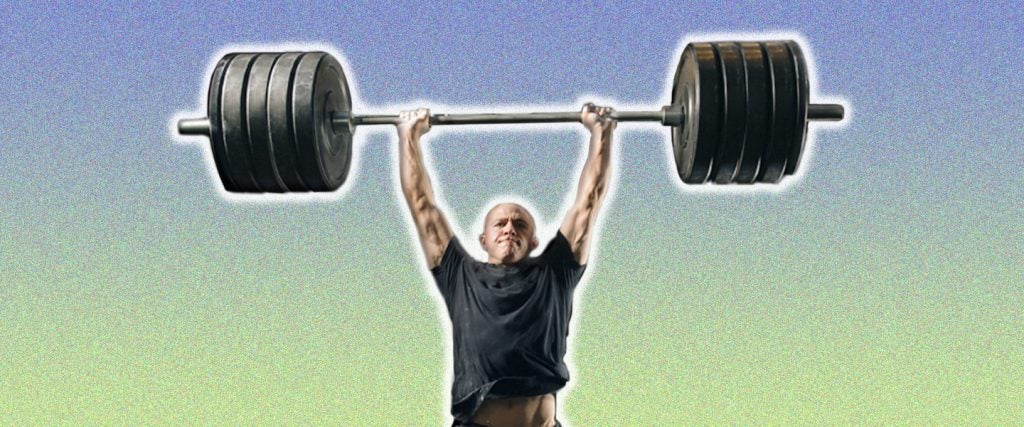When it comes to weightlifting, seeing the letters “PR” appended to your lifting total on a dry-erase board does not mean you’ve earned a trip to sunny Puerto Rico, nor does it mean that your most recent lift has been peer-reviewed. “PR” doesn’t mean that a public relations team is currently working on promoting your accomplishments either.
Instead, PR refers to a personal record. Whatever your all-time best mark is at a measurable event in a fitness or athletic setting, that’s your PR, and whenever you surpass it, that barrier-busting masterpiece becomes your new PR.
Where did the term PR originate?
Its usage really came to the fore during the running boom of the 1970s, when community participation in running events surged, and the raw number of total running events available for public participation exploded right alongside it. Before the decade was out, track-and-field stars were specifically referring to their PRs by that abbreviated name during media interviews.
From there, the PR terminology quickly spread to weightlifting competitions and was commonly used in reference to a weightlifter’s best ever performances in individual lifts. Nowadays, PR can be applied to just about anything that can be measured in a fitness context, including the number of repetitions performed using a set weight in a specific exercise, or even a number of reps performed in a bodyweight exercise, despite your weight likely fluctuating.
Should I be chasing PRs while I’m training?
That all depends on how you’re training and what you’re training for.
If you’re a classic weightlifter or a powerlifter, the pursuit of PRs is central to your efforts. Since scoring in competitions is based on your ability to put together the best combined score from either two or three lifts depending on whether you powerlift or weight lift, you’ll be testing the boundaries of your abilities fairly frequently during your training.
On the other hand, if you’re a swimmer or runner who competes in a number of events throughout the year, there’s no need to chase PRs during practice sessions, because you’ll be given frequent opportunities to establish new PRs during a variety of full-blown competitions.
But what if I’m just going about my ordinary workouts? Should I be looking toward PRs then?
This gets into subjective territory of what constitutes a PR. If you go from six strict pull-ups from a dead hang to nine reps by employing the exact same process, that would safely qualify for a PR with respect to the number of reps you’ve completed of a bodyweight exercise. It’s also fair to treat this as an authentic PR inasmuch as push-up and pull-up totals are commonly used by the military to verify physical competency for duty.
The same goes for the NFL Draft Combine. If you’re one of the select few training for it, you may want to establish a PR based on the number of bench-pressing reps you can complete at 225 pounds, since that’s precisely what you’ll be asked to do there. But once you start to wander outside of these sorts of tests, chasing reps of certain weights can become pretty useless if you’re not lifting heavy enough — for instance, 20 reps at a lighter weight isn’t gonna produce meaningful gains compared to 8 to 12 reps at a higher weight.
It’s okay to experiment with a well-intentioned all-out test of your abilities from time to time, but more likely than not, the best PR of all is gonna be the number of weeks you can go without missing a workout.

